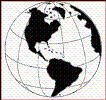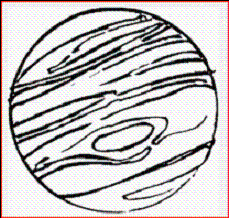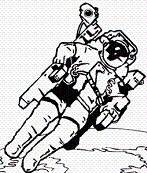Online Assessment
Instructions
1) Type in your first and last name in the
“Name” box in the top-left corner.
2) Next type in your teacher’s name in
the “ID” box.
3) Then type in your school’s full name in the
“Email” box.
4) Select the best answer for each question.
5) When you
are finished click the “Grade and Submit” button.
6) The grade will be emailed
to your teacher.
|
|
|
1.
|
NOTE: If your teacher’s last
name is Elliott, then you are doing the wrong assessment.
---This assessment is only for
students of other teachers.
---If your teacher is Mr. Elliott, then please go back to the
website and click on the first assessment link instead. Thanks!
Earth | Triple-Beam Balance | The Moon | | | | | | |
In a laboratory on
Earth, experiments show that an object has a mass of 2 kg and weighs 20 N. The same object is
later measured on the Moon, where the gravitation field strength is less than on Earth.
On the Moon, will the mass and
weight of the object be the same, less, or more than on Earth?
a. | Less mass, same weight | c. | Same mass, same
weight | b. | Same mass, less weight | d. | Less mass, less weight |
|
|
|
2.
|
Mass and weight are not the same, and therefore we
use different procedures and instruments to measure these properties.
Which process listed below is most suitable for the direct measurement of mass?
a. | using a spring scale and
expressing the results in ounces | b. | using a barometer and expressing the results in pounds per square
inch | c. | using an electronic scale and expressing the results in newtons per
meter | d. | using a balance and expressing the results in
kilograms |
|
|
|
3.
|
How does mass affect gravitational force?a. | The gravity of an object increases as the masses of the objects
decrease. | b. | Gravitational force increases as the masses of the objects
increase. | c. | The gravity of an object decreases as the masses of the objects
increase. | d. | Gravitational force between objects does not depend on their
masses. |
|
|
|
4.
|
The space shuttle consisted
of three main components:
(1) A winged orbiter (see diagram B above)
(2) A large external
fuel tank (see diagrams A and C above)
(3) two booster rockets (see diagram A
above.)
After the
shuttle blasted off, the external tank and the two booster rockets were jettisoned. This
significantly reduced the mass of the spacecraft.
As the mass decreased, what happened
to shuttle’s weight?a. | As the mass decreased, the shuttle weighed more due to an increase in
gravity. | b. | As the mass of the spacecraft increased, the space shuttle weighed
more. | c. | As the mass of the spacecraft decreased, the space shuttle weighed
less. | d. | The shuttle’s weight remained constant regardless of the mass of the
spacecraft. |
|
|
|
5.
|
On Earth an astronaut has a mass of 70 kg
(kilograms), and her weight is 700 N (Newtons). She travels to Mars which is smaller and less massive
than Earth.
Mars | Earth | .

. |
.
. | | |
What would her weight be on Mars?
a. | Greater than 700 N. | c. | Greater than 70 kg. | b. | Less than 70 kg. | d. | Less than 700
N. |
|
|
|
6.
|
Europa, a moon of
Jupiter, is of interest to scientists because its ice covered ocean may harbor life. Therefore they
are planning to send a robotic explorer there in the near future. This 2500 kg Europa-Explorer robot
will weigh 3250 Newtons on the surface of this moon.
What will be the mass of the
Europa-Explorer when it blasts off from Earth, and what will be mass of the spacecraft on
Europa?a. | Mass on Earth: 2500 kg, Mass on Europa: 1500
kg | b. | Mass on Earth: 5023 N, Mass on Europa: 3250
N | c. | Mass on Earth: 2500 kg, Mass on Europa: 2500
kg | d. | Mass on Earth: 3250 N, Mass on Europa: 1250
N |
|
|
|
7.
|
Lunar
Module | Saturn V-Apollo
Spacecraft | Command
Module | | | | | | |
In 1969 astronauts
first traveled to the Moon in the Saturn-5/Apollo spacecraft. At a height of 111 meters and with a
mass of 2,970, 000 kilograms, it was the most powerful rocket ship ever built. The Saturn-5 was a
three-stage rocket which jettisoned sections as it exited Earth’s atmosphere, and only the
Lunar Module and Command Module actually traveled all the way to the Moon.
By the time the
astronauts maneuvered into the Moon’s orbit, the mass of the spacecraft was reduced down to
only 29, 890 kilograms.
How did the mass of the spacecraft change from Earth to the
Moon?a. | Spacecraft sections were discarded thus reducing the
amount of mass. | b. | The spacecraft weighed much less on the Moon
due to the Moon’s lower gravity. | c. | The Moon has less gravity than the Earth,
therefore the spacecraft had less mass. | d. | Solar wind destroyed nearly 75 percent of the
spacecraft on the way to the Moon |
|
|
|
8.
|
A diver places his
empty scuba tank on a scale and observes that it weighs 222 Newtons (about 50 pounds). He then pumps
air into the tank until it is full.
Why does the tank now weigh more?a. | When air is forced into a metal container the air cools causing the density to
increase. | b. | The pressure from the air pump increased the volume of the tank. | c. | Nitrogen and oxygen chemically react in the tank causing new mass to
form. | d. | Air is made of matter which has mass. More mass in the tank increases the
weight. |
|
|
|
9.
|
An astronaut is in orbit about planet Jupiter which
has more mass than any other planet in our solar system. In Jupiter’s orbit he weighs 912 N
(Newtons). Then he travels back home to planet Earth.
Jupiter | Astronaut | Earth | .

. | .

t |

.
. | | | |
What would his weight be on Earth?
a. | Less than 912 N. | c. | Greater than 912 N. | b. | His mass would be less than 912
N. | d. | His weight would be 912
N. |
|
|
|
10.
|
Mass is the amount of matter present in a body
while weight is a measure of how strongly gravity pulls on that matter.
Which of the following
two factors influences the weight on an object due to the gravitational pull of a
planet?
a. | The rotation and revolution of the planet | b. | The mass and radius of the planet. | c. | The atmosphere and
electromagnetic field of the planet | d. | The shape and radius of the
planet. |
|